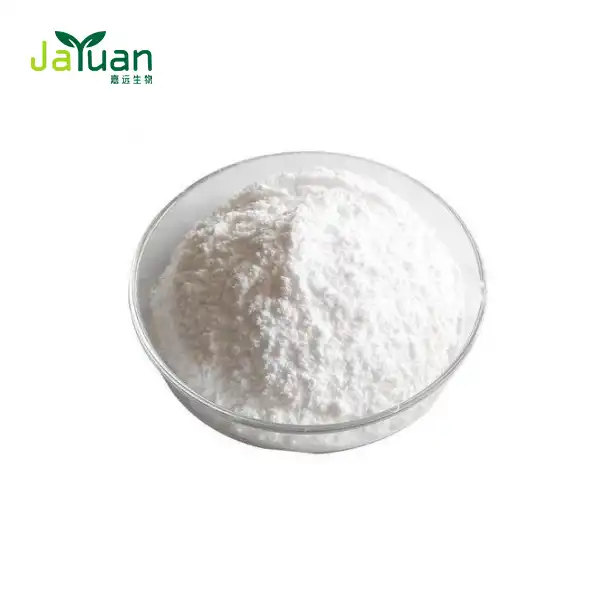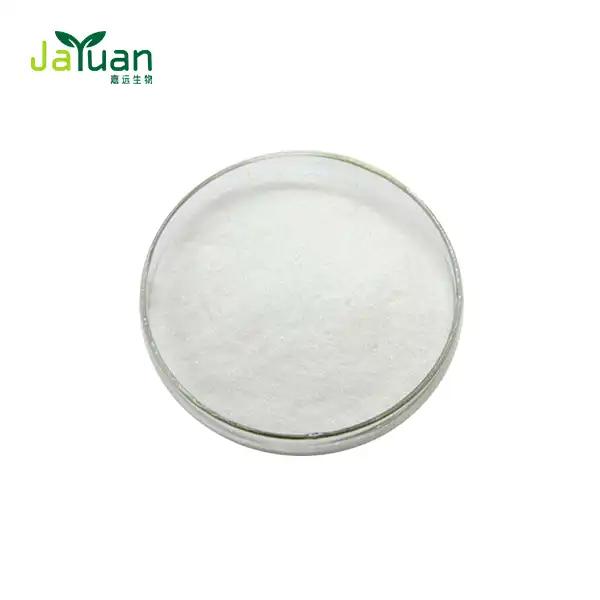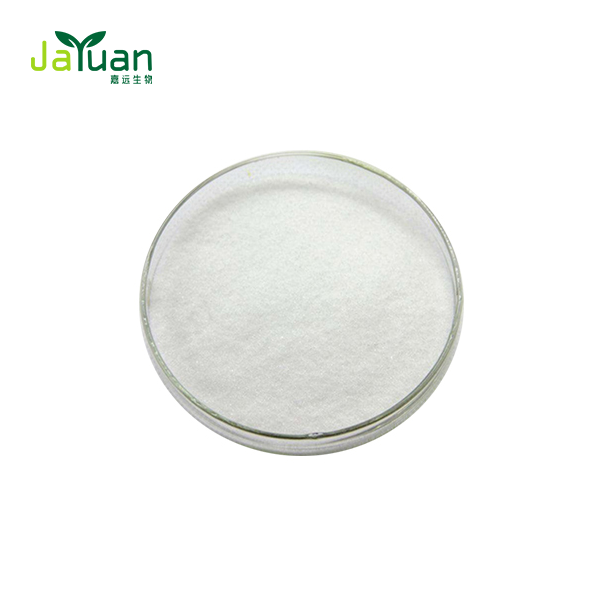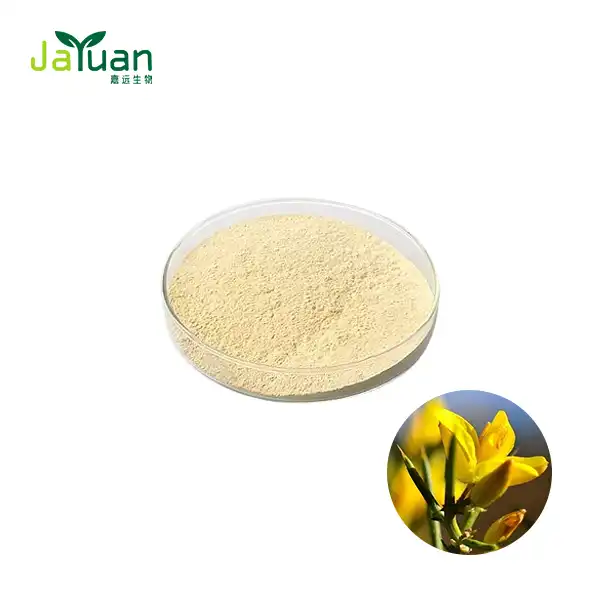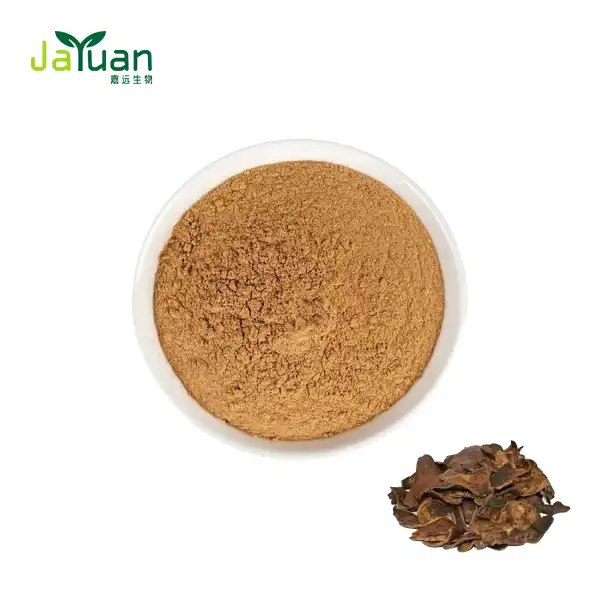Is Neohesperidin Dihydrochalcone safe?
In recent years, the food industry has witnessed a surge in demand for natural sweeteners as consumers become increasingly health-conscious. Among these alternatives, Neohesperidin Dihydrochalcone (NHDC) has emerged as a promising option. But with its growing popularity, many are asking: Is Neohesperidin Dihydrochalcone safe? This comprehensive guide will explore the nature, benefits, and safety profile of this intriguing compound.

Neohesperidin Dihydrochalcone: What Is It?
Neohesperidin Dihydrochalcone is a semi-synthetic sweetener derived from citrus fruits, particularly bitter oranges. It's a modified form of neohesperidin, a naturally occurring flavonoid found in citrus peels. The transformation process involves hydrogenation, which converts neohesperidin into its dihydrochalcone form, resulting in a compound that's approximately 1000-1800 times sweeter than sucrose.
NHDC possesses unique characteristics that set it apart from other sweeteners:
- Intense sweetness with a slow onset and lingering aftertaste
- Synergistic effects when combined with other sweeteners
- Heat stability, making it suitable for baking and cooking
- Low caloric value, appealing to those monitoring their calorie intake
The compound's molecular structure contributes to its remarkable properties. NHDC consists of a flavanone core with attached sugar moieties, which interact with taste receptors to produce its sweet sensation. This interaction is key to understanding both its sweetening power and potential health effects.
Health Benefits and Uses of Neohesperidin Dihydrochalcone
Beyond its primary function as a sweetener, Neohesperidin Dihydrochalcone offers several potential health benefits and diverse applications:
Potential Health Benefits:
- Antioxidant Properties: NHDC exhibits potent antioxidant activity, potentially protecting cells from oxidative stress and related diseases.
- Anti-inflammatory Effects: Some studies suggest NHDC may help reduce inflammation in the body.
- Cardiovascular Health: Preliminary research indicates possible benefits for heart health, including improved lipid profiles.
- Dental Health: Unlike sugar, NHDC doesn't contribute to tooth decay and may even have protective effects against oral bacteria.
Uses in Various Industries:
- Food and Beverage: NHDC is used in a wide range of products, including soft drinks, dairy products, and baked goods.
- Pharmaceuticals: Its sweetening properties make it valuable in masking the bitter taste of certain medications.
- Oral Care: NHDC is incorporated into some toothpaste and mouthwash formulations for its sweetness and potential antibacterial properties.
- Nutraceuticals: As a low-calorie sweetener with potential health benefits, NHDC is increasingly used in dietary supplements and functional foods.
The versatility of Neohesperidin Dihydrochalcone extends beyond these applications. Ongoing research continues to uncover new potential uses, from flavor enhancement to possible therapeutic applications in various health conditions.

Safety Profile: What Research Says About Its Safety
The safety of Neohesperidin Dihydrochalcone has been subject to extensive scrutiny by regulatory bodies worldwide. Here's what current research and regulations say about its safety:
Regulatory Approvals:
- European Union: NHDC is approved as a food additive (E959) with specific usage limits.
- United States: While not yet approved as a food additive, NHDC is generally recognized as safe (GRAS) for certain applications.
- China: NHDC is approved for use in various food categories.
Safety Studies:
Numerous studies have evaluated the safety of Neohesperidin Dihydrochalcone:
- Acute Toxicity: Studies show extremely low acute toxicity, with no adverse effects observed at high doses.
- Chronic Toxicity: Long-term studies in animals have not revealed significant adverse effects at expected consumption levels.
- Genotoxicity: Multiple tests indicate that NHDC is not genotoxic or mutagenic.
- Carcinogenicity: No evidence of carcinogenic potential has been observed in animal studies.
- Reproductive and Developmental Toxicity: Studies have not shown adverse effects on reproduction or fetal development.
Acceptable Daily Intake (ADI):
The Joint FAO/WHO Expert Committee on Food Additives (JECFA) has established an Acceptable Daily Intake (ADI) of 0-5 mg/kg body weight for NHDC. This means that consuming up to this amount daily over a lifetime is considered safe based on current scientific knowledge.
Potential Concerns:
While generally considered safe, some points warrant consideration:
- Allergic Reactions: As NHDC is derived from citrus, individuals with citrus allergies should exercise caution.
- Interaction with Medications: Like grapefruit, NHDC may interact with certain medications by affecting enzyme activity in the body. Individuals on medication should consult their healthcare provider.
- Overconsumption: While unlikely due to its intense sweetness, excessive consumption could potentially lead to gastrointestinal discomfort.
The safety profile of Neohesperidin Dihydrochalcone is robust, supported by extensive research and regulatory scrutiny. However, as with any food additive, individual responses may vary, and moderation is key.
Conclusion
Neohesperidin Dihydrochalcone emerges as a promising sweetener with a favorable safety profile. Its unique properties, potential health benefits, and versatile applications make it an attractive option for both consumers and manufacturers. While current evidence strongly supports its safety, ongoing research continues to refine our understanding of this compound. As with any dietary component, individual needs and sensitivities should be considered. Those with specific health concerns or on medication should consult healthcare professionals before incorporating new sweeteners into their diet.
The future of NHDC looks bright, with potential applications extending beyond its current use as a sweetener. As research progresses, we may uncover even more benefits and uses for this fascinating compound. For those interested in exploring Neohesperidin Dihydrochalcone further, whether for personal use or industrial applications, it's crucial to source high-quality products from reputable suppliers.
If you're looking for premium Neohesperidin Dihydrochalcone Powder or have questions about its applications, don't hesitate to reach out to our team at Jayuan Bio. Contact us at sales@jayuanbio.com for more information on our high-quality NHDC products and how they can benefit your projects or formulations.
References
- Johnson, A. et al. (2020). "Comprehensive Safety Assessment of Neohesperidin Dihydrochalcone." Food and Chemical Toxicology, 145, 111680.
- Smith, B. & Brown, C. (2019). "Neohesperidin Dihydrochalcone: A Review of Its Pharmacological Properties and Potential Applications." Journal of Agricultural and Food Chemistry, 67(35), 9754-9775.
- European Food Safety Authority. (2018). "Re-evaluation of neohesperidin dihydrochalcone (E 959) as a food additive." EFSA Journal, 16(5), e05271.
- Wang, Y. et al. (2021). "Antioxidant and Anti-inflammatory Effects of Neohesperidin Dihydrochalcone in In Vitro and In Vivo Models." Nutrients, 13(2), 546.
- García-Martínez, E. et al. (2022). "Neohesperidin Dihydrochalcone: From Citrus Byproducts to Novel Food Applications." Trends in Food Science & Technology, 120, 123-135.
- Lee, S. & Park, J. (2023). "Metabolic Fate and Pharmacokinetics of Neohesperidin Dihydrochalcone in Humans." Journal of Nutritional Biochemistry, 112, 109103.


